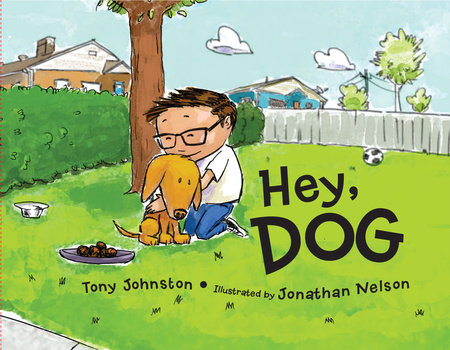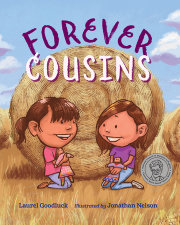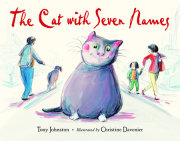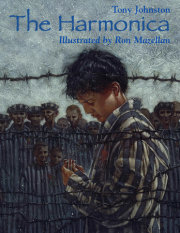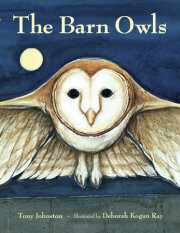A round-headed, bespectacled kid finds a stray dog and does everything to earn the dog's trust. Arriving home from school, the narrator discovers a dog crouching in a bush in the backyard. When the dog flees, the narrator puts out water in a Frisbee for it and later provides a quilt and leftover meatballs, hoping the dog will return. Next day, the meatballs are gone, but the dog still hides. Noticing that the skinny, cringing dog has scars and no tags, the thoughtful child asks Mom why anyone would harm a dog, and she "fiercely" replies, "Some people are not as good as dogs." After more patient conversations with the dog and more Frisbees with food, the protagonist's efforts are finally rewarded. Referring to the stray as "Dog," the child tells the story with a tone of urgency yet in a direct, easy-to-follow manner. Compassion for Dog shines through the text, strongly reinforced in the simple illustrations, drawn manually and colored in Photoshop. Nelson is a master at capturing nuance in facial expression and body language, both human and canine. As the unnamed narrator patiently, lovingly cares for Dog, the emotions of both are clear, and readers will cheer Dog's transition from fear to trust as he gradually emerges from the bush. The protagonist and Mom—no other family members are depicted—both present white. This gentle, moving lesson in perseverance will touch young readers, especially the dog lovers.
—Kirkus Reviews
A young boy finds a homeless dog and patiently works to gain its trust. Walking home from school one day, an unnamed child sees a dog hiding in the bushes near his suburban home. Thin, trembling, covered in dirt and scars, and absolutely terrified, the dog shrinks from contact with anyone. Slowly and carefully the boy and his mother begin to feed and take care of the animal. This is a quiet story about cultivating empathy for anyone or anything that needs help. The boy is kind and considerate, constantly thinking of the dog, and what he can do to improve its condition. The slow and delicate pace of the text gives weight to this process and to the heartwarming conclusion. The illustrations keep returning to the same image of the dog in the bushes, showing how he emerges from hiding more and more as he begins to trust the family. VERDICT A sweet and tender story with a positive and happy resolution. Purchase where endearing pet stories are in high demand.
—School Library Journal
In the bushes between the sidewalk and his yard, a boy sees a dog and tries to befriend him. The first time, the skinny mutt runs off. So the boy repeatedly places food and water beside the hedge. Shivering from fear, the dog eats and drinks what the boy leaves, but remains reluctant to venture out of the bushes. The boy notices the dog’s scars and keeps his distance, but often sits nearby and talks to him. When the boy asks Mom why someone would hurt a dog, she “says fiercely, “Some people are not as good as dogs.’” One morning, the dog finally licks the boy’s fist, and hears him say, “Let’s go home.” With many expressive picture books to her credit, Johnston writes simply and convincingly from the boy’s point of view, clearly communicating the dog’s fear and the boy’s patience and compassion in overcoming it. Created with strong black lines and muted colors, Nelson’s illustrations contrast the hopeful boy with the anxious dog, while kids will feel the longing on both sides.
—Booklist





